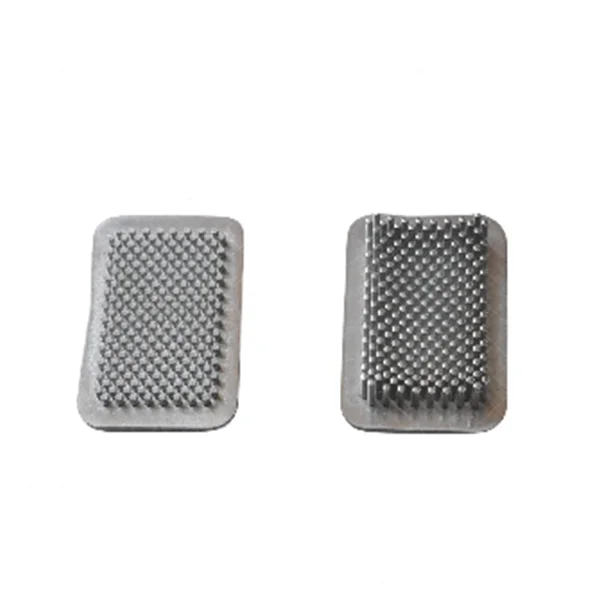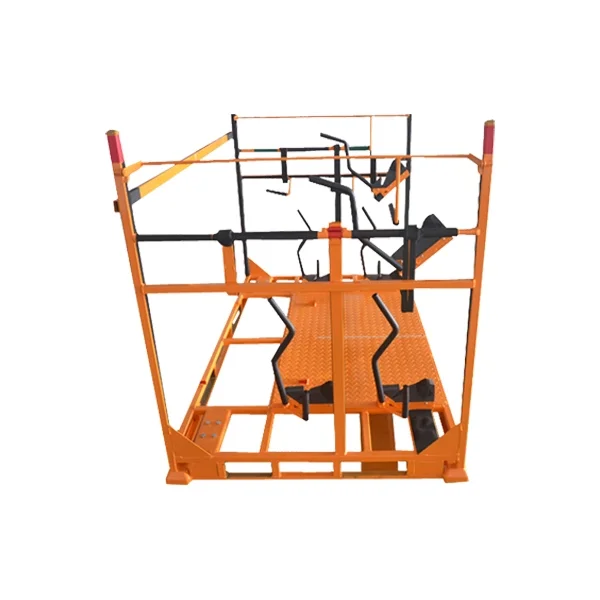Cold extrusion forging is a precision metal forming process widely used in the production of high-performance components across industries such as automotive, aerospace, medical, and electronics. Unlike hot forging, cold extrusion occurs at or near room temperature, offering advantages such as superior surface finish, tighter dimensional tolerances, enhanced mechanical properties, and material savings. The production of custom cold extrusion forging parts is a sophisticated, multi-stage process that requires precise control over material selection, die design, lubrication, forming operations, and post-processing. In this blog post, as a high precision CNC machining parts manufacturer, Okin will share the production process of custom cold extrusion forging parts for sale.
1. Material Selection and Preparation
The first step in producing custom cold extrusion forged parts is selecting the appropriate raw material, typically in the form of wire rods or bar stock. The material must have adequate ductility and workability to allow significant plastic deformation without cracking or excessive work hardening. Common materials include:
* Carbon steels (e.g., C10, C20, C45)
* Alloy steels (e.g., 42CrMo4, 20MnB4)
* Stainless steels (e.g., 304, 316L)
* Non-ferrous metals such as aluminum, copper, and titanium alloys
Once selected, the raw material undergoes pre-treatment processes such as spheroidizing annealing (for steel), pickling, and phosphate coating to optimize its ductility and surface cleanliness. These treatments reduce internal stresses, homogenize microstructures, and prepare the surface for subsequent lubrication.
2. Lubrication and Coating
Lubrication is critical in cold extrusion to reduce friction between the die and the workpiece, minimize wear, and control material flow. Common lubrication systems include:
* Phosphate + soap coating: Ideal for ferrous materials, this two-stage coating provides excellent adhesion and low friction during extrusion.
* Oxalate coatings: Used for high-alloy steels, this method enhances adhesion of lubricants in difficult-to-form metals.
* Zinc stearate, molybdenum disulfide, or polymer-based dry films: Applied when environmental or application-specific requirements demand alternatives to traditional wet coatings.
Proper lubrication not only improves formability but also extends tool life and ensures a consistent extrusion process.
3. Cold Extrusion Process Design
Custom cold extrusion parts often feature complex geometries and tight tolerances, requiring thorough process design and simulation. The key elements include:
* Part Geometry Analysis: Understanding the final part shape, required tolerances, and surface finishes.
* Finite Element Analysis (FEA): Used to simulate material flow, stress distribution, and identify potential defects such as folding, cracking, or unfilled areas.
* Die Design: Extrusion dies are usually made from tool steels (e.g., SKD11, H13) or carbide inserts for high wear resistance. Dies are designed to shape the material progressively through multiple stages.
Cold extrusion processes are generally categorized into:
* Forward extrusion: Material is pushed through the die to reduce cross-section.
* Backward extrusion: Material flows backward around the punch, forming hollow or cup-shaped parts.
* Combined extrusion: Combines forward and backward methods for intricate shapes.
* Lateral extrusion: Material flows perpendicular to the pressing direction.
The selection depends on the required part geometry, mechanical properties, and production volume.

4. Multi-Stage Forming
Most custom cold-extruded components are not formed in a single stage due to limitations in achievable deformation per pass. Instead, the process typically involves multi-stage forming using progressive dies on cold heading or multi-station forging presses. Each station performs a specific operation:
* Initial heading or upsetting to form the blank shape.
* Pre-forming to approximate the final shape and reduce subsequent forming loads.
* Extrusion to define critical dimensions and internal/external features.
* Trimming or coining to refine edges and achieve tight tolerances.
* Piercing or tapping to add holes or threads where needed.
Multi-stage presses are synchronized with automatic feeding and part transfer systems, ensuring high production rates and consistency across large batches.
5. Dimensional Control and In-Process Inspection
Dimensional accuracy is a hallmark of cold extrusion, typically achieving tolerances within ±0.01 mm. However, tight process control is essential. Several methods are employed:
* In-line monitoring systems using optical or laser sensors.
* Die cavity wear monitoring to detect dimensional drift.
* Hardness and surface roughness checks post-forming.
For critical applications (e.g., automotive safety parts), Statistical Process Control (SPC) is implemented to continuously analyze variations and ensure compliance with customer specifications.
6. Heat Treatment and Surface Finishing (If Required)
Although cold extrusion increases the strength of parts via work hardening, some components may require post-forming heat treatments to modify mechanical properties. Common treatments include:
* Stress relieving to reduce internal stresses from forming.
* Quenching and tempering for hardened steel components.
* Solution treatment and aging for aluminum or titanium alloys.
Additionally, surface finishing operations may be conducted to enhance performance or aesthetics:
* Shot blasting or vibratory finishing for surface cleaning and deburring.
* Coating or plating (e.g., zinc, chrome, phosphate) for corrosion resistance.
* Passivation for stainless steels to improve oxidation resistance.
7. Secondary Machining and Assembly (Optional)
While cold extrusion achieves near-net shape parts, some components may require secondary machining for features not attainable through forging, such as fine threads, precision holes, or mating surfaces. Operations include:
* CNC turning or milling
* Thread rolling or tapping
* Laser engraving or marking
For assemblies, parts may undergo press fitting, welding, or joining to integrate with larger systems. Automation ensures efficiency and repeatability in high-volume production lines.
8. Quality Assurance and Testing
Before shipment, finished parts undergo rigorous quality inspection tailored to the specific industry requirements. Typical tests include:
* Dimensional inspection using coordinate measuring machines (CMMs)
* Hardness and tensile testing to validate mechanical performance
* Metallographic analysis to examine grain flow and detect inclusions or defects
* Non-destructive testing (NDT) such as magnetic particle inspection, ultrasonic testing, or dye penetrant inspection, particularly for safety-critical parts
In industries like aerospace and automotive, traceability is ensured through barcode labeling, lot control, and certificates of conformity (CoC).
9. Packaging and Logistics
Custom cold extrusion parts are packed to prevent mechanical damage, corrosion, or contamination during storage and transport. Common practices include:
* Oil or vapor corrosion inhibitor (VCI) coatings
* Custom foam trays or separators to prevent part-to-part contact
* Moisture-controlled packaging for sea or air shipment
Just-in-time (JIT) logistics and digital inventory tracking help align production schedules with client demand, reducing lead times and storage costs.
Conclusion
The production process of custom cold extrusion forging parts is a technologically intensive, finely controlled operation that blends materials science, mechanical engineering, and advanced automation. From initial material preparation to final inspection, each stage is optimized to ensure that parts meet the highest standards in dimensional accuracy, mechanical performance, and cost-efficiency. As industries continue to demand lightweight, high-strength, and precisely shaped components, cold extrusion will remain a cornerstone technology in precision manufacturing.
By investing in simulation tools, advanced die design, and automated multi-stage presses, manufacturers can meet the growing need for customized, high-performance forged parts in a sustainable and scalable manner.
www.okinmachining.com
Okin



+ There are no comments
Add yours